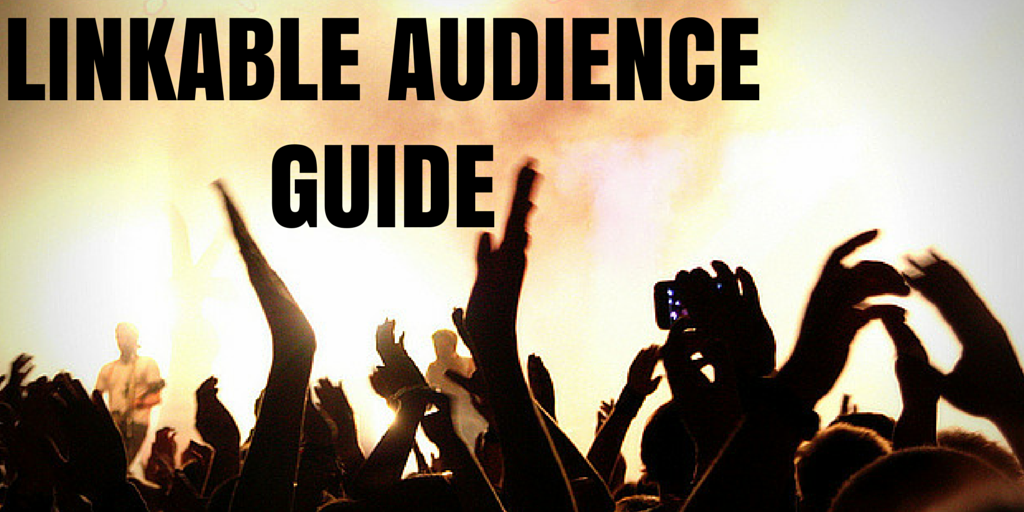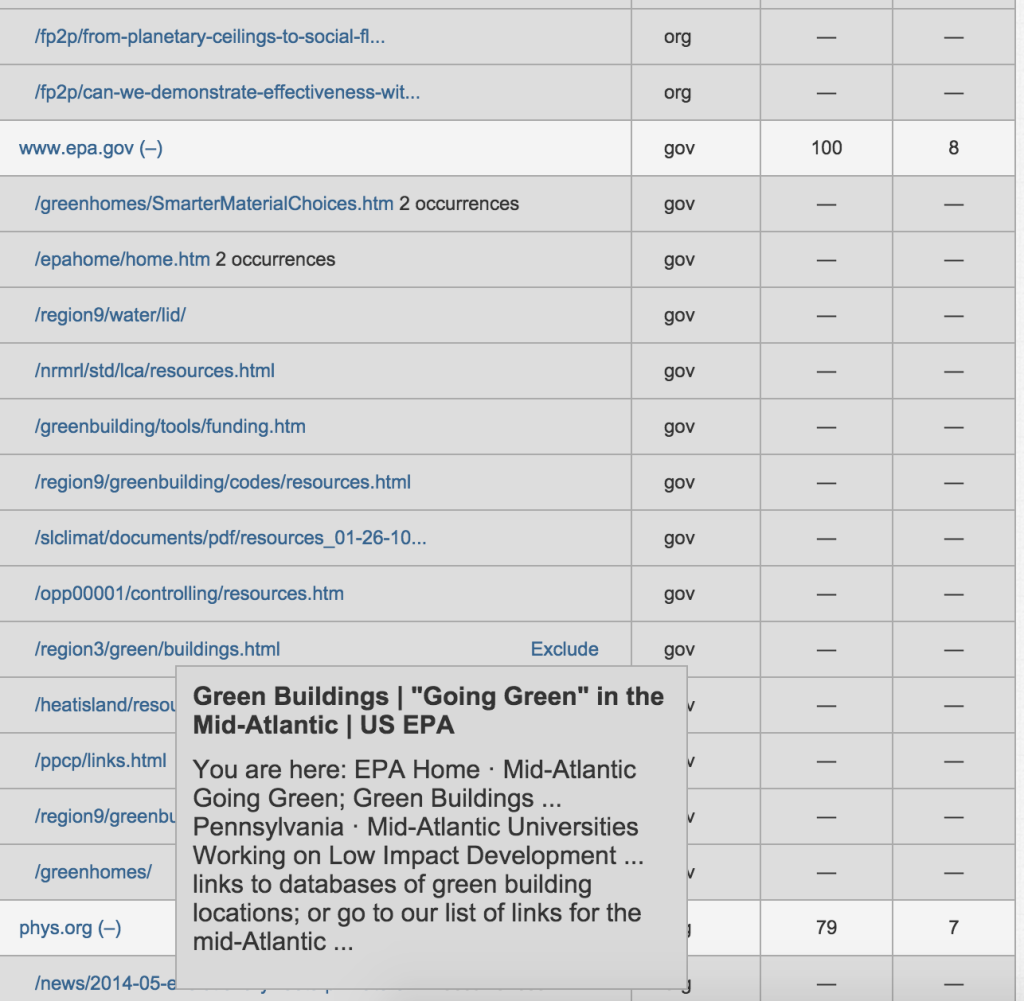Want to see in-the-moment examples of linkable audience brainstorming? Watch our webinar on this topic below:
In our last post, we explained how to transform your SEO keywords into linkable topic subject areas. (We recommend reading that post before continuing!) Now that you can turn SEO Keywords into linkable topics, we’re concentrating on discovering and defining the linkable audiences who generate links.
With a linkable topic and audience, you’ll be fully equipped to spec and create your own linkable content pieces for outreach!
I. Defining Linkable Audience
“Audience” makes up the other half of the linkable content equation and leads us to our final destination, the title of our content piece.
Linkable Topic = The “What”
Linkable Audience = The “Who”
Linkable Title = Linkable Topic + Linkable Audience + The “How”
If a linkable topic is a non-sales-based subject area related to your verticle, a linkable audience is a grouping of people who are served by this non-sales-y content. Links page curators (and other smart, caring editorial folk in charge of publishing to the web) write for these linkable audiences. And curators – the people you will be emailing – care about their audience dearly. If your content serves a linkable audience (and promote your content to linkers), you will earn links.
Linkable Audience Tool
We’ve created another mini-tool (spreadsheet) to visualize the audience selection process. The Title Brainstormer combines your chosen linkable topic with audiences, and it’s pre-populated with some ideas to get you and your team started. Open up that spreadsheet and let’s run through an example before we talk through the actual steps required!
Example: Uncle Frank’s Auto Repair Shop
Remember our auto mechanic, Uncle Frank, from our last post? After running through our linkable topic process, let’s say Uncle Frank decided to create content around the consumer protection niche. Specifically, he wants to create guides to avoiding auto repair fraud.
Here are some possible linkable titles Uncle Frank could develop from intersections of his topic and some known linkable audiences. Notice how each fits the linkable topic + linkable audience model.
- Auto Repair Fraud Prevention for Seniors (Topic: fraud prevention + Audience: seniors)
- Educator Resources on Auto Repair Fraud Prevention (Topic: fraud prevention + Audience: high school educators)
- Auto Repair Fraud Prevention for Low Income Families (Topic: fraud prevention + Audience: low income families)
- Auto Repair Fraud Prevention in North Carolina (Topic: fraud prevention + Audience: local residents)
Understand: any given piece of content’s “linkable audience” may reflect only a small subset of your core customers. Uncle Frank certainly serves senior citizens, but they’re not his entire market. An audience needs to be specific enough to appeal to linkers, which means that not every piece of linkable content creation will appeal to your entire audience base. But if you have figured out your topic based on your SEO keywords, you’ll find a linkable audience that’s as relevant to your market as it can be, and by creating a content calendar (as you’ll learn in the next post in this series), you can plan to reach a variety of potential client audiences.
II.Discovering Your “Who” – Linkable Audiences
When finding linkable audiences, we’re looking for groups of people who would benefit from specifically tailored information on a topic. But most importantly, we have to determine if there are people actually curating information for this audience.
Always: Think About Your Customers
You likely have an idea of who your ideal customers are, how they see themselves, etc. Can you break up your audience by unique needs or services they require? Do any groupings of your customers self-identify with a demographic or type of person? If so note them down and test them out for linkability.
If any of your target audience happens to intersect with a linkable audience – or COULD intersect with a linkable audience – then you’re in a great position proceed with title brainstorming!
If you need a little help brainstorming audiences, below are a couple ways to choose the best linkable audiences for your content:
1. Citation Labs’s List of Linkable Audiences
While a linkable audience can be any group of people united by a common characteristic, after 5+ years of link building on the agency side at Citation Labs, we’ve found that some audiences get more attention from curators than others. Specifically, audiences who belong to communities around which there is a high level of academic, medical or government interest. This makes sense – the more official research, help, advice and documentation in a niche, the more we’ll find sites that link to these resources.
Some of these highly linkable audiences include:
- Teachers
- Caregivers
- Parents
- Senior citizens
- Veterans
- Health conditions sufferers
- Job Seekers
- The Unemployed
- Workers in the Non-Profit sector (people curing societal ills such as homelessness, poverty, abuse)
- Members of any underserved communities (immigrants, people with disabilities, etc.)
- Local community
- Students
- Families of Substance Abusers
This is not to say that you must choose your content’s audience based on these categories. But it’s important to keep in mind the size and scope of the linking audience you’re writing to, and this list is a good starting point for thinking about some of the audience types that links page curators care about.
2. Check Out Topical Links Pages
Use Google (or our Link Prospector tool) to search for existing blogs and links pages related to your target topic area. A topic search is more broad than we recommend for at the outreach stage, as there will be a lot of “noise” to filter through. But for the linkable audience research phase, we can quickly scroll through the noise to find out what audiences are already being addressed under this topic area. Ideally, we want to find the sweet spot between linkable audience in need and existing information surplus.
Example: Green Deal Home Remodeling
During our recent webinar on linkable topic identification, we took real-life examples of SEO key terms submitted by Citation Labs email newsletter subscribers. One of our participants submitted keywords related to “green deal home remodeling.” In the spirit of continuing to build on community examples, let’s find our eco friendly home remodelers some linkable audiences.
Using the link prospector, we created a “links pages” search for these terms:
- eco friendly home
- green home development
- green deal
Since we’re using this search to brainstorm, not to prospect, we increased our search to “web and blogs.”
(Note – if you’ve never used the Link Prospector, we offer a free credit to all new signups. Feel free to take advantage!)
By perusing the “green deal” related posts and links pages, we find a few dozen more specific, linkable audiences for a guide to green home remodeling.
Titles we brainstormed by prospecting:
- Green home fixes for low income families
- Green home design in developing countries
- Green home remodeling for cold climates
- Green home remodeling for home investors
- Green home remodeling for small business owners
- Green home remodeling for new parents
III. Linkable Audience Testing
Linkable audience testing is a similar to the process for linkable topic testing – we want to make sure that this is an audience linkers care about and support.
Try variations of your audience name, along with “for ____” inurl:links.html. It’s vital to identify how the linking community refers to your audience- you can even try using * in your search to open it up a bit. More than 50 results with any one search, and you’re likely on to something!
In addition to testing, we bake a bit of common sense into the process. “Nutrition ideas for hypertension sufferers” is probably a more link-worthy post than “tropical vacation ideas for hypertension sufferers.” Notice we didn’t say SHARE-worthy… the tropical vacation ideas may get shares, but it would fall short of providing the real world value and impact that curators provide (that said, we would still test the vacation concept).
IV. Advanced Linkable Content Creation (Topic + Topic + Audience)
Let’s get way into the realm of “linkable content theory” (also known as “Garrett French’s favorite thing to talk about”) for a moment. We’ve demonstrated that title = topic + audience. Here’s the thing, title can also = topic + topic + audience. Or even topic + topic + topic + audience.
For example:
“the new puppy guide for parents of children with disabilities.”
Topic 1: Pets
Topic 2: Disabilities
Audience: Parents (of kids with disabilities)
How do you know when you’ve got too many topics?
Take the “Does it Matter?” litmus test: If an audience or topic you’ve added does not, on its own, affect what the content’s advice would be, you’ve gone too far.
For example:
“the new puppy guide for LGBT parents of children with disabilities.”
Topic 1: Pets
Topic 2: Disabilities
Topic 3: LGBT
Audience: Parents (of kids with disabilities)
Here, we’ve added another topic, potentially enabling us to reach out to LGBT linkers. Great, right? Another audience. But would subtracting the LGBT topic area have any effect on the content? Would it change what tips we write about? Not in this case. Good try but that particular extra topic fails the “Does it matter?” litmus test.
V. Linkable Titles – Topic + Audience + The “How”
The “How” is the method (or angle) we’re using to provide information on our topic to our audience. It’s the final element needed to create a piece of informational, linkable content.
Think of the “How” as the format our piece of content takes; it tells us how this information will be conveyed to the audience. When Uncle Frank’s Car Repair Shop decides on a topic (“fraud prevention”) and an audience (“seniors”), will he make an infographic on ways to prevent fraud? Fraud prevention checklist? Consumer legal rights guide? etc.
Here are some ways we’ve found to frame our Linkable Topic + Linkable Audience into a Title with a “How”:
- Calculator
- Guide
- Infographic
- Preventing _____
- Tutorial
- Online Tools
- Cost Estimator
- Guide For Parents of _____*
- Guide For Educators of _____*
- Guide For Caretakers of ____*
- Safety Checklist for _____
- Guide to Legal Rights for _____
- Online Locator
* In these cases, our “audience” is technically the people being served by parents, educators or caretakers
VI.Don’t Forget Your Mission
We’ve mentioned “mission” in every post thus far, and we’ll continue to do so. When brainstorming content titles, go nuts. Think of the moon and beyond. But when choosing titles for you linkable content, keep your company’s mission in mind. Which audiences align best with your mission? Who are you inspired to serve? These are the audiences (and therefore, titles) you want to choose.
RSVP to our 4/23 webinar on linkable audiences to learn more, and stay tuned for our next post on content calendar creation.



This was very helpful for me. I am now getting much better at identifying linkable audiences.
The advanced search operators are also a powerful tool for identifying link prospects.
However, identifying a great linkable title is the main challenge.
Thanks very much,
Brian